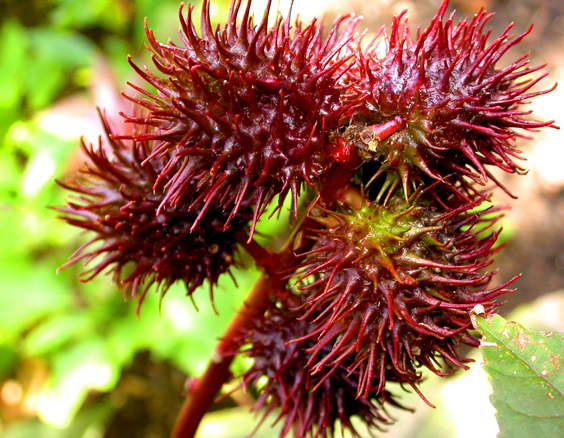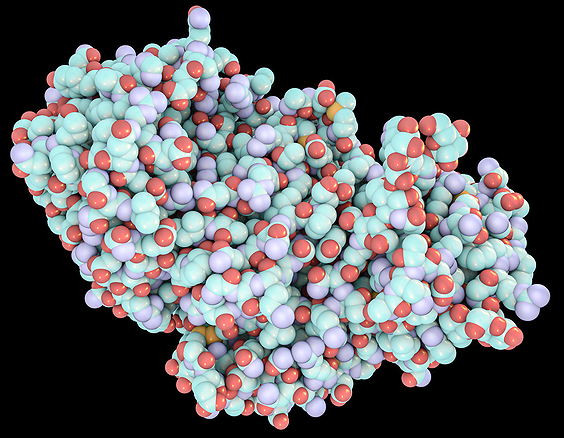This article is part of World War “V”: The COVID-19 Pandemic, a collection of all CNS COVID-19-related articles.
September 24, 2020
Richard Pilch
This month, a package addressed to President Trump was intercepted on its way to the White House after testing positive for the toxin ricin. Toxins are chemicals of biological origin, and thus hold a unique place in chemical and biological weapons nonproliferation: they are banned by both the 1972 Biological and Toxin Weapons Convention (BWC) and the 1993 Chemical Weapons Convention (CWC). However, ricin in particular appears to be a weapon of choice for bad actors because it is relatively straightforward to acquire: if the correct process is followed, the toxin can be readily extracted from castor beans (the source of castor oil), which grow freely in nature as the seed of the Ricinus communis plant. Some one million tons of castor beans are processed for the production of castor oil each year, yielding a waste product that is 5 percent ricin by weight.

Ricinus communis plant, Source: WikiMedia Commons
Ricin has been implicated in no less than five criminal investigations over the past half-decade, [1] including one international hoax and the most recent September 2020 White House case. Three of these investigations involved online activities (discussions and attempted purchases) that enabled law enforcement officials to intervene. There is currently no licensed vaccine or treatment for ricin intoxication. Given the relative ease of producing ricin, and its attractiveness to bad actors, this article argues that expediting the development of medical management and prevention tools is a matter of national security.
Mechanism of Action and the Effects of Ricin
Ricin can enter the body via injection, ingestion, or inhalation. Upon entering the body, the toxin is strongly cytotoxic, killing most cells with which it comes into contact by rapidly and irreversibly inhibiting protein synthesis. Specific clinical symptoms and signs vary depending on the route of entry:
- Injection causes generalized symptoms including weakness, fever, nausea, and vomiting within hours, which progress to shock and potentially death within days.
- Ingestion causes gastrointestinal symptoms including abdominal pain, nausea, vomiting, and (at times bloody) diarrhea within hours, which progress to gastrointestinal hemorrhage and potentially death within days.
- Inhalation causes respiratory symptoms including cough, chest tightness, and difficulty breathing within hours, which progress to respiratory failure and potentially death within days.
The toxin’s lethal dose, extrapolated from experimental mouse data, is in the microgram per kilogram range and is lowest via inhalation. Definitive human data is unavailable.
Identification of Ricin in the Mail
While mail testing specifics in the US are not formally disclosed, the US Centers for Disease Control and Prevention (CDC) describes a two-step process for ricin testing: (1) trace screening for ricin and other potentially harmful biological and chemical agents at the mail facility, a positive alarm of which leads to (2) laboratory testing of the sample employing either time-resolved fluorescence immunoassay, in which antibody binds to ricin and illuminates the sample, or polymerase chain reaction, which detects the genetic material coding for ricin. Mail facility screening methods might include ion mobility spectroscopy, a rapid and relatively affordable but less specific testing methodology compared to the gold standard, gas chromatography-mass spectrometry, or alternative approaches. Some mail facilities may irradiate mail during screening, which would be expected to denature ricin, rendering it harmless.
Considerations for Use as a Weapon
A bad actor may consider using ricin given its comparatively low cost, ease of acquisition, and high lethality versus other potential biological and chemical agents. However, these pros are offset by the fact that ricin is highly susceptible to environmental factors as well as physical stress, making it very difficult to deliver as an aerosol. Thus, ricin is generally viewed as an assassination weapon—in particular given that it is tasteless, odorless, and difficult to detect both pre- and post-mortem. Its utility as a food or water contaminant is also limited due to a dilutional effect that would require large amounts of ricin for any appreciable effect.

3D illustration of ricin molecule. Source: Shutterstock
Abbreviated Weapons History
The potential of ricin as a weapon of war has been evaluated since early in the twentieth century and perhaps before. During World War II, the United States, Canada, and the United Kingdom produced hundreds of kilograms of ricin that were loaded into various munitions, while the Japanese tested the effect of castor bean ingestion on prisoners of war.
In September 1978, Bulgarian secret service agent assassinated dissident Georgii Markov with ricin. While Markov awaited a bus on Waterloo Bridge in London, the secret service agent used a pneumatic umbrella to covertly fire a steel pellet filled with the toxin into Markov’s leg. He died three days later. A second Bulgarian, Vladimir Kostov, was targeted with a similar device in Paris, but survived.
Following the 1991 Persian Gulf War, Iraqi declarations to the United Nations Special Committee (UNSCOM) revealed that Iraq had produced approximately 10 liters of concentrated ricin solution, which they reportedly used in field tests of 122 mm artillery shells.
In March 1991, four members of the anti-government group the Minnesota Patriots Council purchased castor beans through the mail and successfully extracted a small quantity of diluted ricin despite a lack of education and expertise. They plotted to kill law enforcement officials with the toxin but were discovered, and in 1994–1995, became the first persons to be convicted under the US Biological Weapons Anti-Terrorism Act of 1989.
Numerous terrorist cases involving ricin followed, including multiple in connection with al-Qaeda and the Islamic State. Similarly, criminal cases involving ricin bound, dating back to at least the early 1980s.
Oversight and Control
From a law enforcement perspective, the foundation of ricin oversight and control is limiting access to castor beans (the toxin’s source) or the toxin itself. US and international law enforcement bodies have successfully monitored both open and anonymous online marketplaces to interdict attempted purchases of these items, leading to significant arrests. Similar monitoring for ricin extraction procedures has led to both arrests and removal of information from the Internet. Numerous laws apply; for example, in the United States, no less than five laws may be cited:
- Biological Weapons Anti-Terrorism Act of 1989 (BWATA). The BWATA makes it a federal crime to create, possess, or transfer any biological agent “for use as a weapon,” punishable by up to life in prison. [2]
- Anti-Terrorism and Effective Death Penalty Act of 1996 (AEDPA). The AEDPA broadens the purview of the BWATA to include anyone who “attempts, threatens, or conspires” to conduct these activities.
This first group of laws establishes that any plot to use ricin as a weapon is a criminal offense punishable by up to life in prison, whether or not the plot is carried out.
- Antiterrorism Act of 1990. This law focuses on international terrorism that is designed to intimidate or coerce a civilian population or government; it was later amended to include domestic terrorism (see below). Punishment may include death.
- Violent Crime Control and Law Enforcement Act of 1994 (VCCLEA). The VCCLEA amends the Antiterrorism Act of 1990 to specifically include biological agents.
- USA Patriot Act of 2001. The Patriot Act amends the Antiterrorism Act of 1990 to include domestic terrorism.
This second group of laws establishes that any actual use of ricin is a criminal offense punishable by up to the death penalty.
A Matter of National Security
Treatment for ricin intoxication is limited to supportive care. Experimental antitoxins to treat ricin intoxication are under investigation, [3] but none has been approved by the US Food and Drug Administration (FDA).
Experimental toxoids/vaccines to prevent ricin intoxication are similarly under investigation, and in February 2020 the FDA issued a fast track designation to a ricin vaccine intended to streamline its review and approval.
From a medical perspective, the development, testing, and approval of ricin prevention (e.g., vaccine) and treatment (e.g., antitoxin) measures is critical to the US national security posture. The history of interest and pursuit of ricin for illicit ends provides a compelling case for the acceleration of activity in this space, where considerable scientific progress continues to be made despite limited regulatory advancement.
Notes
[1] https://law.justia.com/cases/federal/appellate-courts/ca2/16-819/16-819-2018-08-27.html; https://www.france24.com/en/20200326-tunisian-handed-ten-years-for-ricin-bomb-plot-in-Germany.[2] The official language of the bill imposes criminal penalties upon “anyone who knowingly develops, produces, stockpiles, transfers, acquires, retains, or possesses any biological agent, toxin, or delivery system for use as a weapon…” https://www.congress.gov/bill/101st-congress/senate-bill/993.
[3] See, for example, https://www.ncbi.nlm.nih.gov/pmc/articles/PMC5666376/; https://www.ncbi.nlm.nih.gov/pmc/articles/PMC5666358/.
